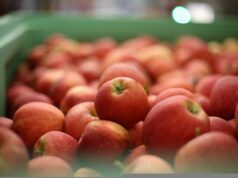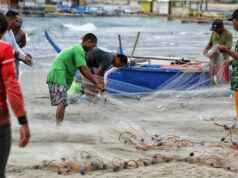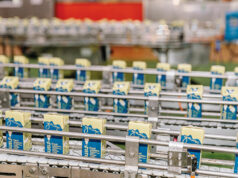Climate change puts the coffee industry in peril
With its dependence on temperature and rainfall, the coffee industry is vulnerable to climate change. Global warming could have adverse effects on the livelihoods of 25 million coffee farmers worldwide, along with millions of more people who are connected to the coffee supply chain, said Tim Scharrer, managing director and vice-president of Green Coffee & Cocoa at Starbucks Coffee Trading Company in Switzerland, during a recent discussion on mitigating the impact of climate change on coffee farmers. “It becomes imminent to us that we have to do something,” he said.
To prepare for the effects of climate change, businesses in the region need to build resilience, said Eileen Gallagher, who leads climate change practice in Asia at BSR, a nonprofit organization dedicated to sustainability. She recommended a three-dimensional approach to risk assessment that involves looking at:
• Hazards like floods, forest fires, storm surges, landslides, droughts, and insect infestations, which affects assets such as infrastructure and resources.
• Exposure to a hazard, which creates risk for employees, services, buildings, and transportation modes.
• Vulnerability or underlying weaknesses such as inadequate infrastructure or weather-sensitive crops that can exacerbate the negative impacts of exposure to a physical hazard.
“What’s challenging is that it’s not a one size fits all,” said Mr. Scharrer. “The approaches are different depending on the country you look at.”
Starbucks, which buys coffee from 30 countries, is looking into its supply chains around the world in an effort to assess where it can have the biggest impact. In Latin America, for instance, it is considering changing the coffee milling process from wet milling, a process that involves preliminary soaking in water, to aguapulping, a process in which the pulp is removed from the beans mechanically using a machine. The latter uses only 20% of the water needed for the former.
In Costa Rica, meanwhile, its research and development center is studying sturdy coffee varieties to provide farmers with much-needed resilience against climate change. The company is also promoting the use of shade plants to promote better plant protection and to avoid the depletion of soil humidity. “There are certain types of trees that capture nitrogen in the soil. This is basic for life for coffee growing in plantations,” said Alfredo Nuño, director of Starbucks Global Farmer Support Centers and Hacienda Alsacia.
RISK DIVERSIFICATION
Reducing irrigation is just one part of the equation. Dave D’haeze, a senior coffee expert from Vietnam, pointed out that risk diversification is also crucial. In a study he conducted with the Natural Union for Nature Conservation, he found that planting new varieties of robusta could increase yield even if the size of the coffee plantation was reduced by 20%. Furthermore, 40% of the water needed for production can also be saved if farmers opted for intercropping, or growing two or more crops in the same field.
“Farmers can potentially earn 2 ½ times more than if he just grew monocrop. He can also sequester 81% more carbon. This is a solution,” said Mr. D’haeze.
Ms. Gallagher encouraged long-term and holistic thinking to increase the chances of business survival. “Can you break down your business into your assets?,” she asked. “How will your employees be affected? Do you need cooling systems? What energy resources can be efficient for that? Can there be more trees to provide shade and prevent runoffs? Who can you partner with to co-invest? Can you use index-based insurance to avoid financial shock?”
Mr. Scharrer advocated an industry-wide, pre-competitive level discussion to get to a point where the devastating effects of climate change could be slowed down. “This is clearly a responsibility of everyone,” agreed Mr. Nuño. “Every single action we take is relevant. With every sip of coffee, we have to think, ‘What impact is this having?’” — Patricia B. Mirasol



